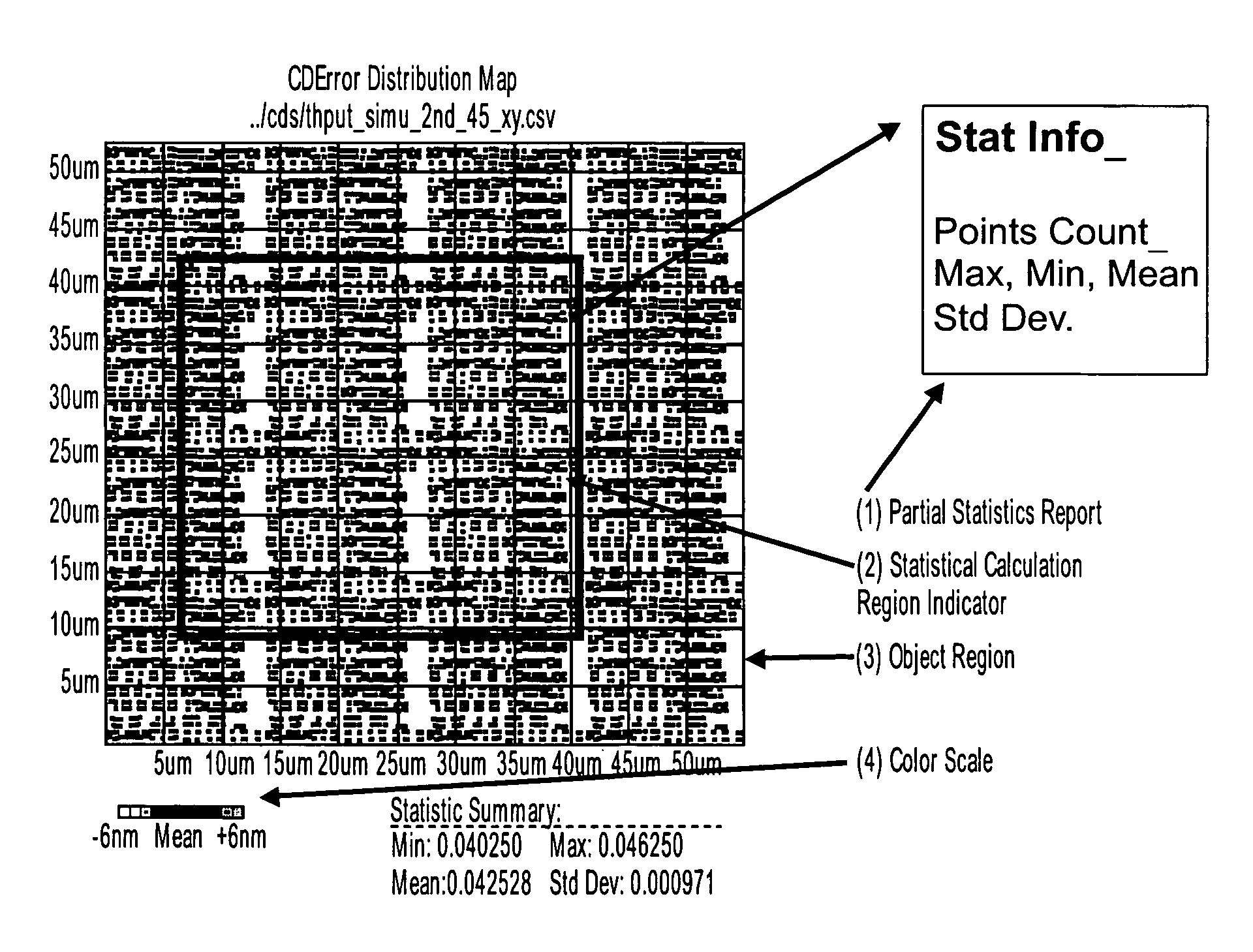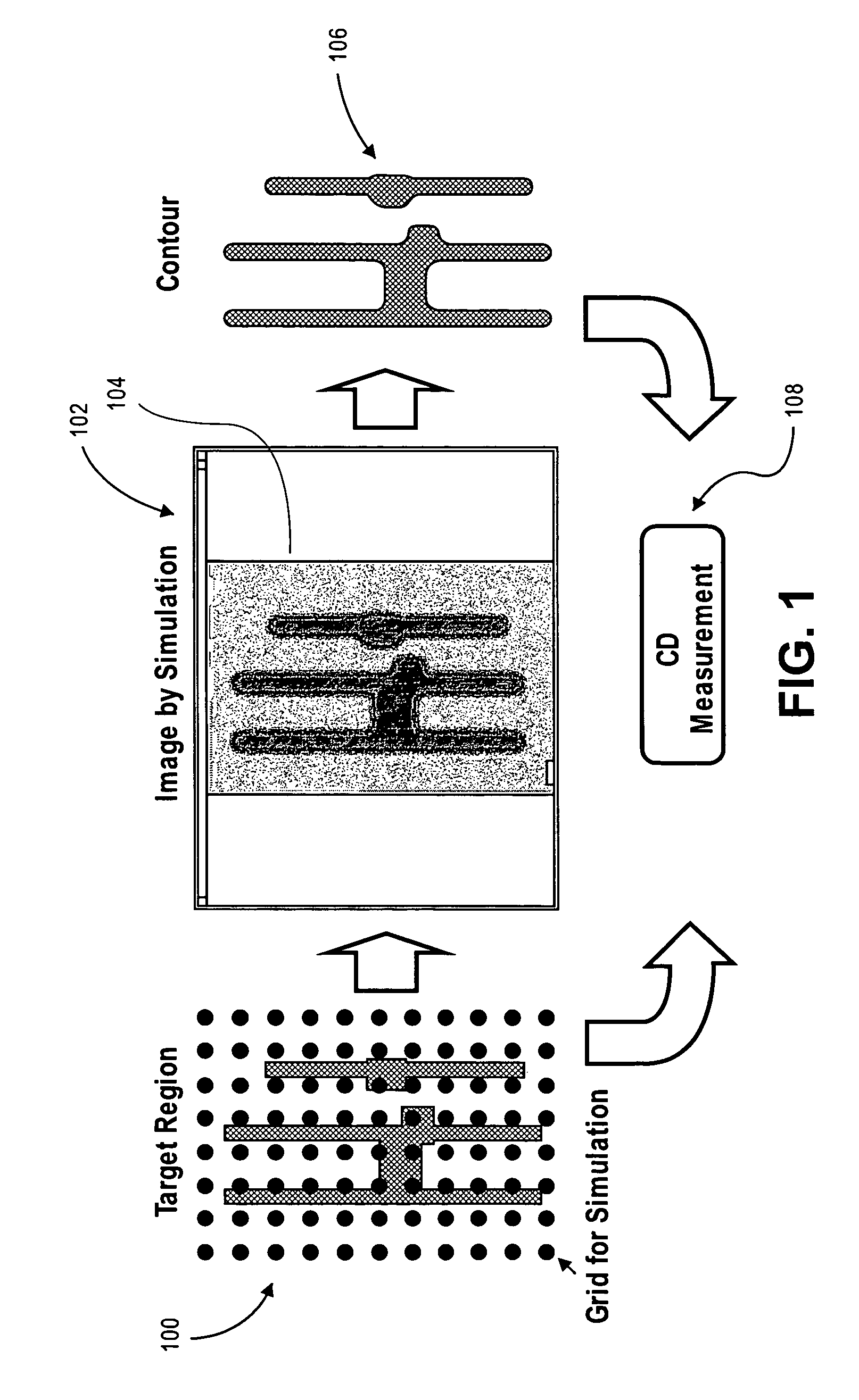Method and system for lithography simulation and measurement of critical dimensions
a lithography simulation and critical dimension technology, applied in the field of lithograph technology, can solve the problems of image quality degradation and resolution limits, differences between intended patterns and images obtained by lithography technology, and serious degradation of image quality, so as to improve the quality and accuracy of lithography technology, the effect of small computing time and efficient quality control
- Summary
- Abstract
- Description
- Claims
- Application Information
AI Technical Summary
Benefits of technology
Problems solved by technology
Method used
Image
Examples
Embodiment Construction
[0038]Various embodiments of the present invention are described hereinafter with reference to the drawings. It should be noted that the drawings are not drawn to scale and that elements of similar structures or functions are represented by like reference numerals throughout the drawings.
[0039]FIG. 1 shows conventional lithography simulation and procedure of CD measurement by the simulation. A target region 100 is an area where lithography simulation is performed. A grid 102 for simulation is a set of points that covers the target region 100 and intensity of the lithography is calculated at the points. An image 104 of the lithography obtained by the simulation, and contour 106 of the intensity.
[0040]Lithography is an indispensable technology for modern fine manufacturing. In the semiconductor industry, for example, it is relatively difficult to build a semiconductor manufacture process without lithography technologies. Other examples include fabrication of MEMS (Micro Electro-Mechan...
PUM
 Login to View More
Login to View More Abstract
Description
Claims
Application Information
 Login to View More
Login to View More - R&D
- Intellectual Property
- Life Sciences
- Materials
- Tech Scout
- Unparalleled Data Quality
- Higher Quality Content
- 60% Fewer Hallucinations
Browse by: Latest US Patents, China's latest patents, Technical Efficacy Thesaurus, Application Domain, Technology Topic, Popular Technical Reports.
© 2025 PatSnap. All rights reserved.Legal|Privacy policy|Modern Slavery Act Transparency Statement|Sitemap|About US| Contact US: help@patsnap.com



